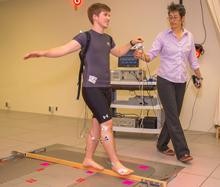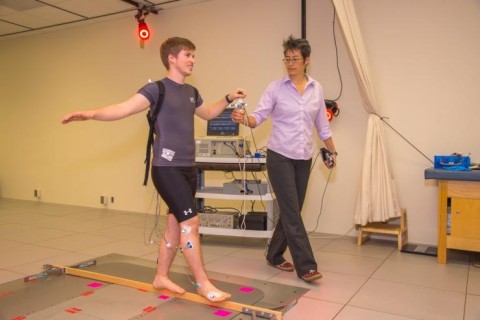

From the American Physiological Society:
A ballet dancer’s grace is not just because the dancer constantly practices moving with poise. New research published in the Journal of Neurophysiology reports that professional ballet dancers’ years of physical training have enabled their nervous systems to coordinate their muscles when they move more precisely than individuals who have no dance training.
The nervous system is comprised of the brain, spinal cord and nerves throughout the body. It allows the body’s systems to communicate and coordinate with each other, such as the brain controlling movement of the leg muscles.
Rather than controlling muscles individually, the nervous system initiates movement by activating muscles in groups. The groups of muscles are called "motor modules," and the nervous system combines different motor modules to achieve a wide range of motion.
In this study, a research team at Emory University and Georgia Institute of Technology examined whether long-term training to enhance physical coordination, such as dance training, affects how motor modules are recruited when moving.
"This study helps us understand how long-term training in an activity such as dance affects how we do everyday tasks," says study author Lena Ting, Ph.D. "We found that years of ballet training change how the nervous system coordinates muscles for walking and balancing behaviors overall. This may also have implications for how training through rehabilitation helps people with impaired mobility." Ting is professor in the Wallace H. Coulter Department of Biomedical Engineering at Georgia Tech and Emory and in the Department of Rehabilitation Medicine at Emory University School of Medicine.
The researchers compared the movements of professional ballet dancers with 10 or more years of ballet training to individuals with no dance or gymnastics training. Gait and activity of muscles in the legs and torso were tracked as the subjects walked across the floor, across a wide beam and across a challenging narrow beam.
Ballet dancers and untrained individuals had similar gait patterns when they walked across the floor or the beam. However, when walking across the narrow beam, ballet dancers showed better balance by walking across farther. Ballet dancers recruited more motor modules and did so more consistently than untrained individuals, indicating that ballet dancers used their muscles more effectively and efficiently, the researchers stated. The ballet dancers also used more of the same motor modules when walking across a floor as when walking across the beam compared with untrained individuals, supporting that training can affect control of every-day movements.
According to the researchers, the results show that years of ballet training changed how the nervous system coordinated muscles for walking and balancing behaviors.
The article "Long-term training modifies the modular structure and organization of walking balance control" is published ahead-of-print in Journal of Neurophysiology.
CONTACT:
Walter Rich
Communications Manager
Wallace H. Coulter Department of Biomedical Engineering
Georgia Institute of Technology
Communications Manager
Wallace H. Coulter Department of Biomedical Engineering
Georgia Institute of Technology
